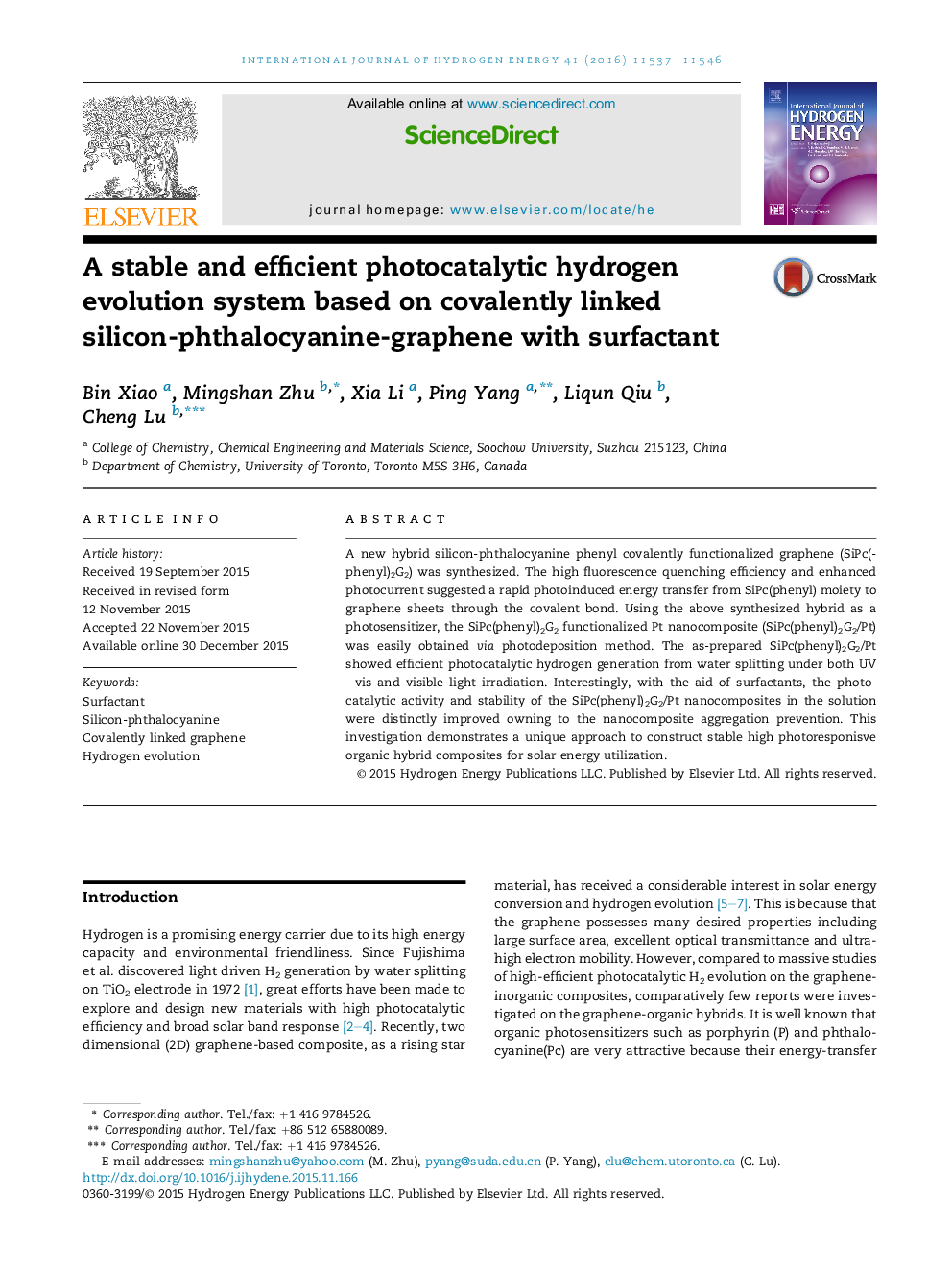| کد مقاله | کد نشریه | سال انتشار | مقاله انگلیسی | نسخه تمام متن |
|---|---|---|---|---|
| 1268482 | 1497398 | 2016 | 10 صفحه PDF | دانلود رایگان |
• Covalently linked silicon-phthalocyanine-graphene nanocomposite was synthesized.
• SiPc(phenyl)2G2/Pt worked as efficient photocatalyst for H2 production.
• Surfactant improved the stability and activity of the photocatalytic H2 evolution.
A new hybrid silicon-phthalocyanine phenyl covalently functionalized graphene (SiPc(phenyl)2G2) was synthesized. The high fluorescence quenching efficiency and enhanced photocurrent suggested a rapid photoinduced energy transfer from SiPc(phenyl) moiety to graphene sheets through the covalent bond. Using the above synthesized hybrid as a photosensitizer, the SiPc(phenyl)2G2 functionalized Pt nanocomposite (SiPc(phenyl)2G2/Pt) was easily obtained via photodeposition method. The as-prepared SiPc(phenyl)2G2/Pt showed efficient photocatalytic hydrogen generation from water splitting under both UV–vis and visible light irradiation. Interestingly, with the aid of surfactants, the photocatalytic activity and stability of the SiPc(phenyl)2G2/Pt nanocomposites in the solution were distinctly improved owning to the nanocomposite aggregation prevention. This investigation demonstrates a unique approach to construct stable high photoresponisve organic hybrid composites for solar energy utilization.
Figure optionsDownload as PowerPoint slide
Journal: International Journal of Hydrogen Energy - Volume 41, Issue 27, 20 July 2016, Pages 11537–11546
